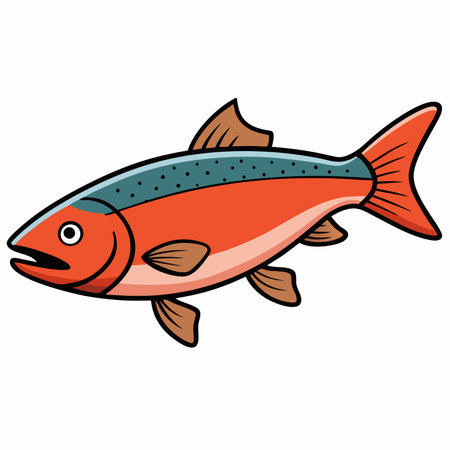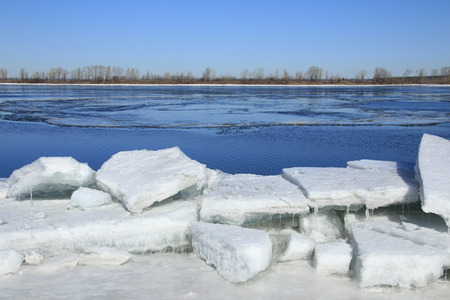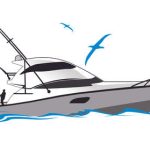Understanding Ice Conditions and Safety
Before you even think about dropping a line through the ice, its critical to understand the conditions youre walking on. Ice fishing offers incredible opportunities to catch trophy fish, but it also comes with its own set of risks. Learning how to assess ice thickness, spot dangerous pressure ridges, and identify safe zones can make or break your trip—and keep you out of harm’s way.
Assessing Ice Thickness
Knowing how thick the ice is under your boots is step one. Heres a quick guide to help you determine if its safe to walk or drive on:
| Ice Thickness | Permitted Activity |
|---|---|
| Less than 4 inches | Stay off! Not safe for any activity. |
| 4 inches | Safe for walking and ice fishing. |
| 5-7 inches | Snowmobiles or ATVs are okay. |
| 8-12 inches | Small cars or light trucks can be driven cautiously. |
| 12-15+ inches | Medium trucks or heavier vehicles may be permitted. |
Always carry a spud bar or an ice auger to test thickness as you go, especially after warm spells or heavy snowfalls that can weaken the ice.
Reading Pressure Ridges and Cracks
Pressure ridges form when sheets of ice collide due to wind or temperature changes. These ridges can look like frozen waves or jagged cracks across the surface. While they might seem stable, they often hide weak spots where water seeps up and thins the ice around them.
Signs of Dangerous Pressure Ridges:
- Raised areas of broken or piled-up ice
- Crumbling edges near cracks
- Wet or slushy patches nearby
- A noticeable difference in color—gray ice usually means its thinner and unsafe
If you come across one, it’s best to reroute and find a safer path around it.
Identifying Safe Zones on the Ice
Certain areas tend to freeze faster and stay safer longer during the season:
- Lakes with minimal current: Less water movement means more solid freezing.
- Sheltered bays: Protected from wind, these freeze more evenly.
- Away from shorelines: Surprisingly, edges near land can thaw faster due to runoff or underground springs.
- Avoid inlets and outlets: Moving water underneath keeps these spots dangerously thin.
Pro Tip:
If youre unsure about local conditions, talk to bait shops, park rangers, or other anglers who know the lake well. Local knowledge can save you time—and maybe even your life.
The better you understand ice safety, the more confident youll be when heading out onto frozen lakes in search of monster pike, walleye, or lake trout. Safety first means more time doing what you love: catching fish beneath the ice!
2. Targeting Trophy Species: Patterns and Hotspots
When it comes to advanced ice fishing tactics, knowing where and when to find trophy fish is key. Different species like lake trout, northern pike, and walleye behave differently as winter sets in. Understanding their seasonal movements and how they relate to depth, structure, and underwater features will give you a serious edge out on the ice.
Lake Trout
Lake trout are cold-water predators that stay active throughout the winter. They typically roam deep water basins early in the season but move shallower as oxygen levels shift and baitfish relocate. Focus on:
- Early Ice: 40-80 feet over deep basins near drop-offs
- Mid-Winter: Transition zones between deep basins and mid-depth flats (30-60 feet)
- Late Ice: Shallower shelves (20-40 feet) near spawning shoals
Northern Pike
Pike are aggressive hunters that prefer shallow weed beds and ambush points. During ice season, their location depends heavily on oxygen availability and prey movement:
- Early Ice: Shallow bays with healthy weed growth (5-15 feet)
- Mid-Winter: Deeper breaks adjacent to weeds or channels (10-25 feet)
- Late Ice: Return to shallow spawning areas; look for warming water near inlets
Walleye
This popular game fish is known for its low-light feeding habits. Walleye follow predictable paths related to structure like points, humps, and reefs:
- Early Ice: Rocky points, weed lines, or drop-offs close to shore (10-20 feet)
- Mid-Winter: Main lake structure like humps or mid-lake reefs (20-35 feet)
- Late Ice: Move toward tributary mouths and shallow gravel flats for pre-spawn staging
Trophy Fish Location Cheat Sheet
| Trophy Species | Early Ice | Mid-Winter | Late Ice |
|---|---|---|---|
| Lake Trout | Basin edges (40-80 ft) | Slope transitions (30-60 ft) | Shelves & shoals (20-40 ft) |
| Northern Pike | Bays with weeds (5-15 ft) | Drops near cover (10-25 ft) | Natal shallows & inlets (5-15 ft) |
| Walleye | Drops near shore (10-20 ft) | Main lake humps/reefs (20-35 ft) | Mouths of rivers/flats (10-15 ft) |
The Role of Structure and Topography
Trophy fish don’t just swim randomly—they follow structural cues in their environment. Look for underwater features such as breaklines, submerged humps, channel edges, and transition zones between soft and hard bottom. These locations often concentrate both baitfish and predators.
Tactics Tip:
If youre not marking fish consistently, drill holes along different depths across these structures until you find active zones. Don’t be afraid to move until you strike gold beneath the ice!

3. Gear Up Like a Pro: Advanced Ice Fishing Equipment
If you want to land trophy fish under the ice, having the right gear is just as important as knowing where to drill. Modern ice fishing equipment has come a long way, and today’s high-tech tools can give you a serious edge on the ice. Let’s break down some of the must-have gadgets and how to fine-tune your setup for peak performance.
Explore Cutting-Edge Sonar Technology
Sonar units have revolutionized ice fishing by letting you see what’s happening below the surface in real time. Whether youre targeting walleye, lake trout, or panfish, using sonar helps you identify fish depth, movement, and structure.
| Sonar Feature | Benefit |
|---|---|
| Live Imaging (e.g., Garmin LiveScope) | Real-time visuals of fish and lure movement |
| CHIRP Sonar | Clearer target separation and better depth detail |
| Flasher Units | Instant feedback on fish activity beneath your hole |
Ice Augers: Speed Meets Efficiency
A reliable auger saves time and energy—especially when searching for active fish across a large area. Electric augers are becoming more popular thanks to their quiet operation and ease of use.
| Auger Type | Best For |
|---|---|
| Electric Augers (e.g., Ion, StrikeMaster Lithium) | Quick drilling with minimal noise—great for mobility |
| Gas-Powered Augers | Heavy-duty drilling in thick ice conditions |
| Hand Augers | Lightweight and budget-friendly—ideal for early ice |
Tuning Your Rod-and-Reel Setup
Your rod and reel choice should match your target species and the technique youre using. Fine-tuning this combo improves sensitivity, hooksets, and overall control.
Recommended Setups by Target Species:
| Species | Rod Power & Action | Reel Type |
|---|---|---|
| Panfish (Crappie, Bluegill) | Ultralight / Fast action | Straight-line or spinning reel with smooth drag |
| Walleye | Medium-light / Medium-fast action | Baitcasting or quality spinning reel with good sensitivity |
| Northern Pike / Lake Trout | Medium-heavy to Heavy / Moderate action | Baitcaster with strong drag system and braided line backing |
Add-Ons That Give You an Edge
- Underwater Cameras: Great for confirming fish species and watching reactions to your bait.
- Tackle Organizers: Keep jigs, spoons, and plastics sorted for fast changes.
- Heated Shelters: Stay warm longer so you can fish more effectively without rushing.
- Sleds & Mobility Gear: Make it easier to cover more ground on big lakes.
The right equipment doesn’t just make life easier—it makes you a better angler. When every bite counts, dialing in your gear could be what puts that trophy catch on the ice.
4. Bait Strategies That Trigger Big Fish Strikes
When you’re chasing trophy fish beneath the ice, selecting the right bait—and knowing how to present it—can be a total game-changer. In this section, we’ll break down the pros and cons of live bait versus artificial lures, and dive into key tactics like jigging cadence, color choices, and presentation styles that can tempt even the most cautious giants hiding in deep winter waters.
Live Bait vs. Artificial Lures
Each has its strengths depending on the target species, water clarity, and fishing pressure. Heres a quick comparison to help you decide what to tie on:
| Bait Type | Pros | Cons |
|---|---|---|
| Live Bait | – Natural scent and movement – Often more appealing to pressured or finicky fish – Ideal for deadsticking or tip-ups |
– Requires care to keep alive – Can be less effective in aggressive jigging situations – Limited color variety |
| Artificial Lures | – Durable and reusable – Wide range of colors, sizes, and actions – Great for covering more water quickly |
– No natural scent unless added – May not fool highly pressured or lethargic fish – Can require more finesse to imitate live action |
Mastering Jigging Cadence
Your jigging motion—aka cadence—can make all the difference when trying to trigger a strike. Trophy fish often follow your bait for several seconds before deciding to bite. Try these proven movements:
- Straight Lift-and-Drop: Raise your rod slowly 1–2 feet, then let it fall naturally. Repeat every few seconds.
- Pounding Jig: Rapid small twitches of the rod tip to simulate an injured baitfish fluttering.
- Deadstick Pause: After a few jigs, let your lure sit still for 5–10 seconds. This mimics a vulnerable prey moment.
Tweak Your Cadence Based on Fish Behavior:
If fish are showing up on your flasher but not committing, slow things down and add longer pauses. Aggressive chasers? Speed things up with shorter intervals between jigs.
Selecting the Right Color
The color of your lure or jig matters more than many anglers think—especially under ice where light penetration is limited. Here’s a simple guideline based on conditions:
| Water Clarity / Light Conditions | Recommended Colors |
|---|---|
| Clear Water / Sunny Days | Naturals like silver, white, or perch patterns; subtle greens and browns |
| Murkier Water / Overcast Days | Bolder colors like chartreuse, orange, pink; glow-in-the-dark options work well too |
| Deep Water (Over 20 ft) | Lures with high contrast (black & white) or glow-painted finishes help stand out in low light |
Bait Presentation Tips That Seal the Deal
No matter what bait you choose, how you present it can determine if you get a nibble or just curious lookers. Here are some tips that consistently produce bites from big fish under the ice:
- Add Scent: Whether using live minnows or plastic baits, adding scent (like minnow gel or garlic attractant) can convince hesitant fish to commit.
- Mimic Local Forage: Match your bait size and color to what’s naturally available in the lake—think shiners, smelt, or freshwater shrimp.
- Suspend at the Right Depth: Use sonar to find where fish are holding and keep your bait just above them—big predators often strike upward.
- Doubles Work Wonders: Try stacking a small teaser jig 6-8 inches above your main lure—it adds movement and curiosity triggers.
Trophy fish don’t get big by being dumb—they’ve seen it all. But with the right combination of bait type, movement, color selection, and smart presentation techniques, you can turn interest into action this hardwater season.
5. Stealth and Strategy: Reading the Ice and Staying Incognito
When it comes to advanced ice fishing, stealth is just as important as having the right gear. Trophy fish don’t get big by being careless—theyre smart, easily spooked, and sensitive to changes in their environment. Mastering the art of staying quiet while moving with purpose can be the difference between landing a giant or going home empty-handed.
Mobility Without the Commotion
The key to success beneath the ice is learning how to stay mobile without making too much noise. Sound travels faster and farther underwater, so even a dropped bucket or heavy footstep can send fish fleeing. To minimize disturbances:
- Use rubber-bottomed boots for quieter steps on the ice.
- Set down gear gently—no slamming augers or banging sleds.
- Drill holes with sharp blades to reduce vibration and noise.
- Use sonar quietly and avoid unnecessary splashing when checking depth or fish activity.
Reading the Ice Like a Pro
Not all ice is created equal. Understanding how weather patterns affect fish behavior will help you decide when to stay put and when to move. Pay attention to:
| Condition | Tactic | Why It Works |
|---|---|---|
| Stable weather, low pressure | Set up camp | Fish tend to be active; less need to move around. |
| Dramatic temperature swings | Hole-hop actively | Fish may scatter or suspend—mobility helps find them. |
| Snow cover on clear ice | Stay put but quiet | Darker conditions make fish more cautious; avoid spooking them. |
| Midday lull periods | Move spots every 30–45 minutes | Bite windows are short; increase odds by covering water. |
The Hole-Hopping Advantage
If youre not getting bites within 15–20 minutes, it’s often better to keep moving rather than waiting it out. Hole-hopping allows you to cover more ground and locate active fish faster. Use a flasher or underwater camera to check for signs of life before committing too much time at one hole.
Tips for Efficient Hole-Hopping:
- Pre-drill a grid of holes early in the day.
- Travel light—use a backpack or compact sled setup.
- Mark productive holes with small flags or GPS waypoints.
- Avoid returning to unproductive spots unless conditions change dramatically.
Bite Windows: Timing Is Everything
Trophy fish often feed during short bite windows, usually early morning, late afternoon, or during specific moon phases. Keep a log of your trips so you can recognize patterns over time. When bite windows open, stay ready—and stay quiet—to make the most of them.
Your Bite Window Checklist:
- Sunrise/Sunset: Prime feeding times for walleye, trout, and panfish.
- Mild Weather Days: Fish are less stressed and more likely to bite.
- Moonrise/Moonset: Often aligns with increased activity in predator species.
- Right Bait + Right Depth: Match lure presentation with fish location and mood.
The best anglers combine stealth with strategy—knowing when to sit tight and when its time to roam. Stay light on your feet, let your electronics guide you, and always respect the silence beneath the ice. That’s how you outsmart trophy fish in frozen waters.


